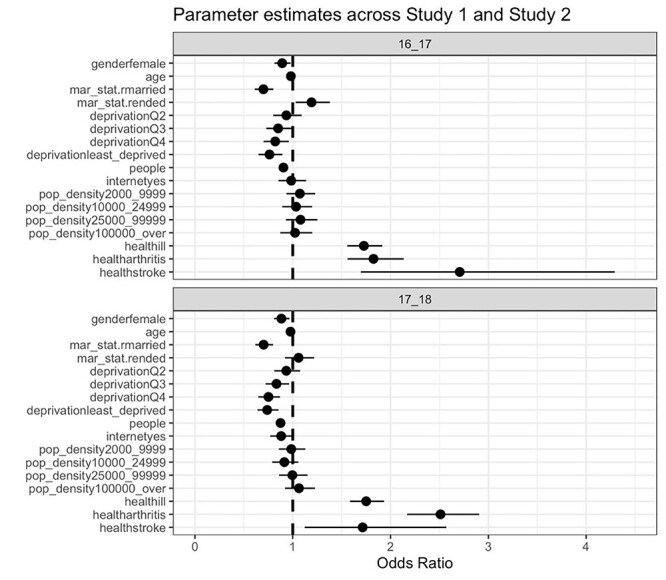Fig. 3.

Parameter estimates (odds ratios) across studies 1 (16_17) and 2 (17_18). Odds ratios were derived using logistic regression with self-reported loneliness as the dependent variable. The loneliness scale was scored from 0 to 6, which was recoded as zero if less than three and one otherwise. The reference category for gender was male. Age was included as a continuous variable. Mar_stat = marital status, which included three levels: single (reference category), married, and ended. There were five levels of deprivation, with the most deprived group included as the reference category (Q = quintiles). People refers to the number of people within the household and was included as a continuous variable. Internet yes refers to those individuals who reported having an internet connection (reference category = no connection). Pop_density refers to the population density of the household’s location with the sparsest density (<2,000 people) as the reference category. Health refers to health status/condition with the reference category being healthy individuals who report no longstanding illness. Point estimates (dots) represent the mean estimate odds ratios and whiskers represent 95% confidence intervals. For more information see Tables 4 and 5.
